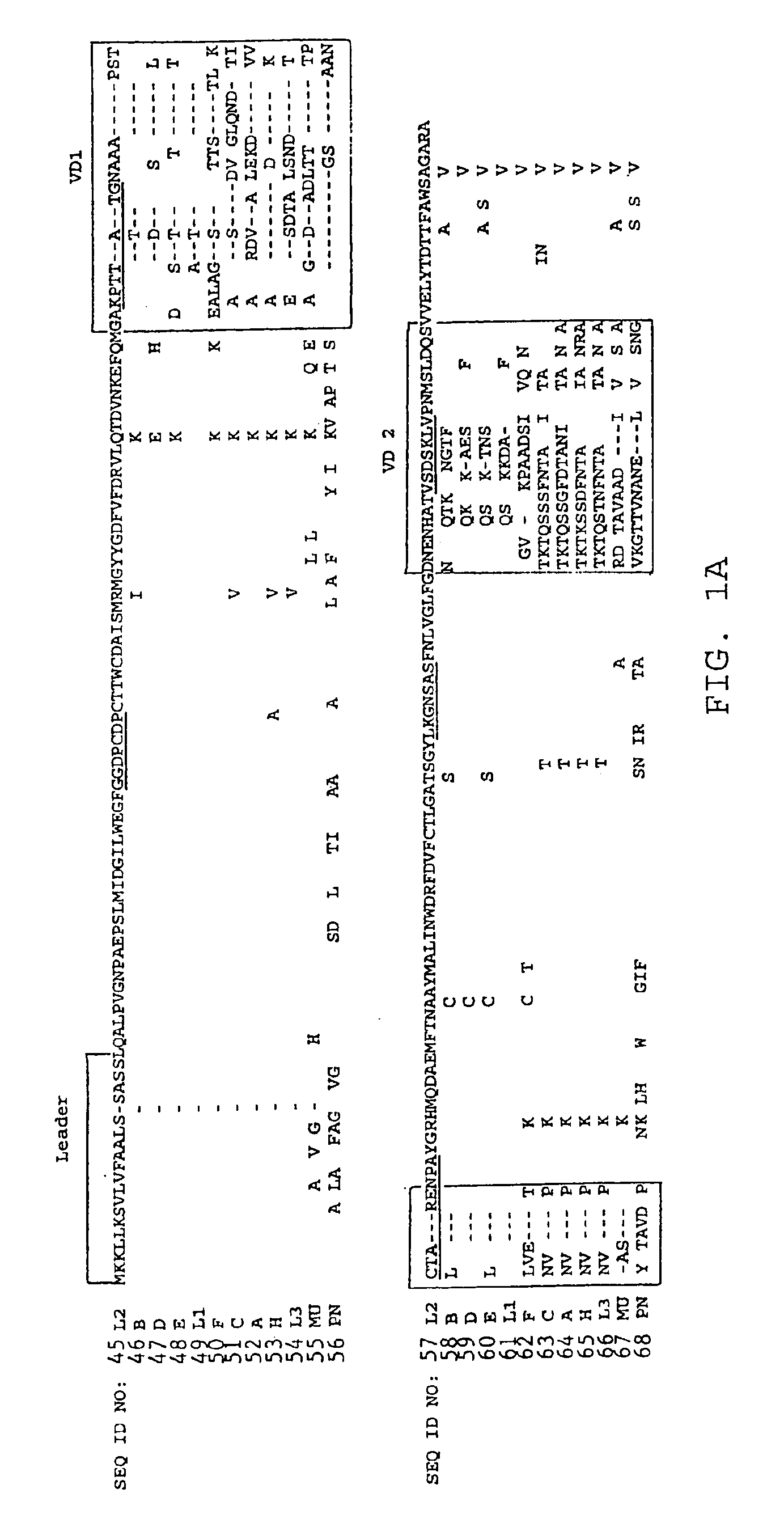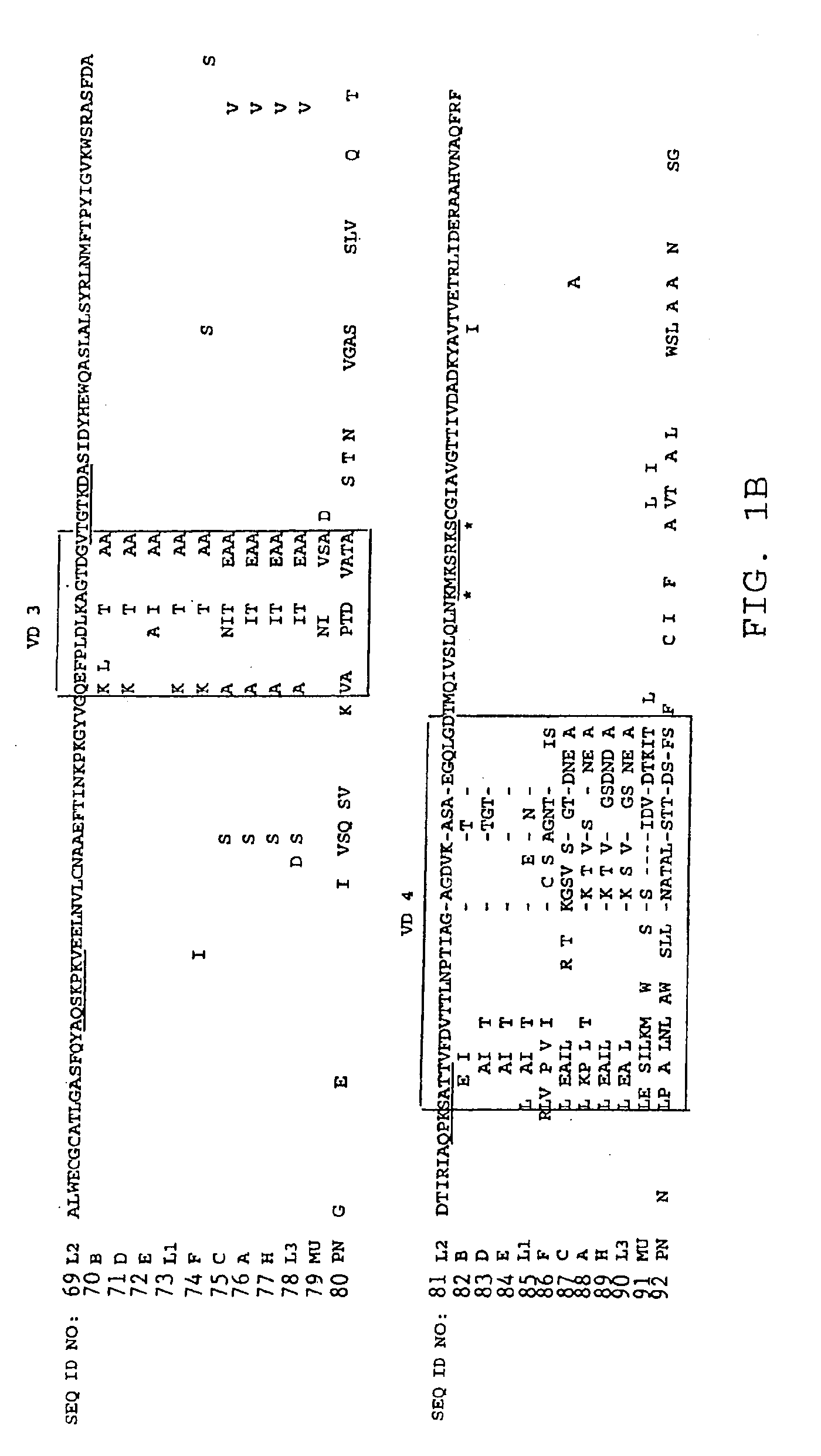Diagnosis and management of infection caused by chlamydia
a technology of chlamydia and chlamydia spores, applied in the direction of biocide, tetracycline active ingredients, drug compositions, etc., can solve the problems of c. pneumoniae /i>infections may relapse, chlamydia is difficult to eradicate, etc., to prevent chlamydia from reactivation and the effect of preventing the reactivation o
- Summary
- Abstract
- Description
- Claims
- Application Information
AI Technical Summary
Benefits of technology
Problems solved by technology
Method used
Image
Examples
example 1
Polymerase Chain Reaction (PCR) for the Full Length MOMP Gene of C. pneumoniae and Other Species of Chlamydia (Diagnostic)
a. Solution PCR
[0206]Serum, blood or tissue samples were pre-incubated in the presence of 10 μM dithiothreitol at room temperature for 2 hours to reduce the disulfide bonds and facilitate release of the outer shell of the elementary bodies. CSF and other body fluids are also suitable for use as described. Othef suitable reducing agents for use in this step include, but are not limited to, succimer and glutathione (e.g., including, but not limited to, glutathione esters, other analogs and deriviatives). The failure to include a reducing agent initially may result in a negative PCR signal following the protease digestion step. Appropriate concentrations of these reducing agents can be readily determined by the skilled artisan without undue experimentation using the 10 μM concentration of dithiothreitol as a guideline. Alternatively, guanidine isothiocyanate may be ...
example 2
Enzyme Linked Immuno Sorbent Assay (ELISA; Diagnostic)
a. Recombinant MOMP-Based ELISA
[0211]The full length MOMP gene of C. pneumoniae was directionally cloned into the pET expression plasmid at the NCOI and NOTI restriction sites using primers to introduce these unique restriction sites into the MOMP ends. Primer sequences are as follows:[0212]CPOMPDNCO (Coding strand): 5′-AGCTTACCAT GGCTAAAAAA CTCTTAAAGT CGGCGTTATT ATCCG-3′ (SEQ ID NO. 43)[0213]CPOMP_CNOT (complimentary strand): 5′-ATATGCGGCC GCTCATAGAA TCTGAACTGA CCAGATACG-3′ (SEQ ID NO. 44)
[0214]The construction of the MOMP insert into the pET expression vector (Novagen, Inc.) yields, on transformation of permissive E. coli, an amino terminal thioredoxin fusion domain, a polyhistidine for Ni+-affinity chromatography, a solubility sequence of approximately 5 kD, and an endopeptidase cleavage site which yields a full length MOMP with a modified amino terminal (as illustrated in FIG. 2) containing an alanine insert between the amino...
example 3
Detection Assay Methods (Diagnostic)
a. Immunoglobulin (Ig) Assay
[0219]C. pneumoniae EBs were grown in primary human umbilical vein endothial cells (HuEVEC; early passage), HeLa 199, or a suitable alternative in the presence of 1 μg / ml cyclohexamide at 35° C. under 5% CO2. Permissive cells were lysed by sonication at 3 days, thereby liberating EBs. The latter were harvestedfrom infection flasks, sonicated, and cellular debris were removed after sonication by a low speed centrifugation (˜600×g) for 5 minutes. EBs were pelleted by high speed centrifugation (30,000×g) for 30 minutes at 4° C. The EB pellet was washed with PBS×1 and was reconstituted in 2 ml PBS per four 25-cm2 culture flask and sonicated at maximum power for 20 seconds and a 0.5 cycle time using a Braun-Sonic U sonicator. EB protein concentration was determined by the Bradford method and the sonicated infectious EB suspension was rendered non-infectious by the addition of 37% formaldehyde to a final 10% formaldehyde conc...
PUM
| Property | Measurement | Unit |
|---|---|---|
| Temperature | aaaaa | aaaaa |
| Temperature | aaaaa | aaaaa |
| Temperature | aaaaa | aaaaa |
Abstract
Description
Claims
Application Information
 Login to View More
Login to View More - R&D
- Intellectual Property
- Life Sciences
- Materials
- Tech Scout
- Unparalleled Data Quality
- Higher Quality Content
- 60% Fewer Hallucinations
Browse by: Latest US Patents, China's latest patents, Technical Efficacy Thesaurus, Application Domain, Technology Topic, Popular Technical Reports.
© 2025 PatSnap. All rights reserved.Legal|Privacy policy|Modern Slavery Act Transparency Statement|Sitemap|About US| Contact US: help@patsnap.com



